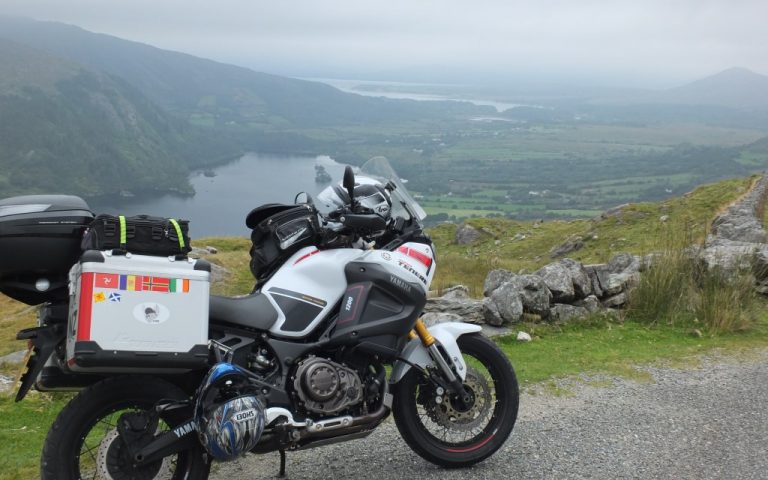Geoff Taylor rides Ireland’s Wild Atlantic Way and discovers that you don’t have to head over to mainland Europe for exciting mountain passes and unforgettable scenery.
This autumn my wife, Penny, and I found ourselves with some time between jobs and naturally we thought the best way to occupy ourselves was to do a little travelling. As it was still late summer we thought Ireland would be close enough for a look around and hopefully, it wouldn’t be too wet. The target was to ride the Wild Atlantic Way, a 1,500 mile stretch of road that winds its way from Kinsale, south of Cork on the Irish Coast, around the west and then north coast, ending just north of Derry/Londonderry.
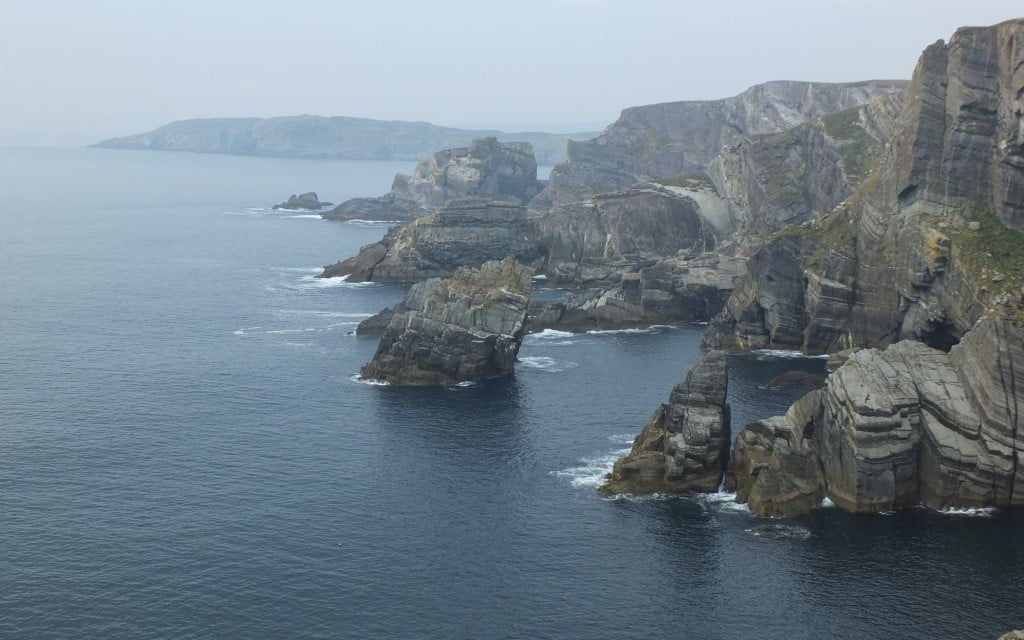
The trip from Maidenhead to Holyhead, especially the A5, was a nice start to the ride. It was dry, sunny, and we were accompanied along the way by a few adventurous sports bike riders having fun. We stayed at the Beach Motel in Holyhead.
It’s away from the port itself and looks really rough from the outside, but the place is full of locals, the food, beverages and craic was excellent and the rooms were clean and spacious. From the Beach Motel it’s just five minutes to the terminal and what followed was to be the precursor for the ocean conditions for the next three weeks. The Irish Sea was glass smooth, the sun was out, and there was barely a breath of wind.
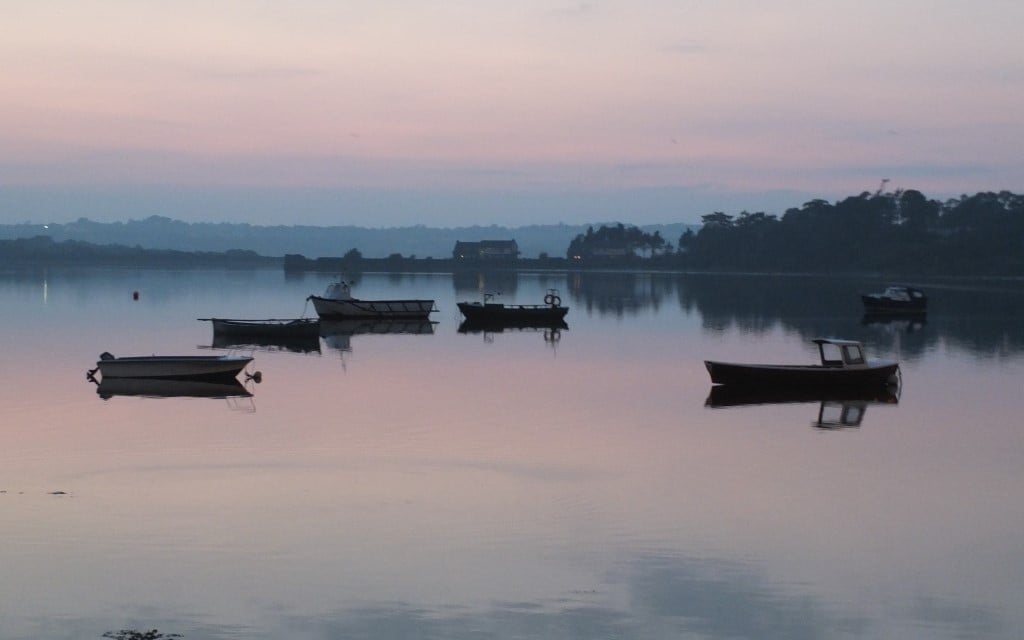
Travelling south from Dublin after a couple of days sightseeing, we stuck to the coast roads, deciding that we would try to ride around the ‘outside’ of the island wherever possible until we picked up the southern end of the Wild Atlantic Way between Kinsale and Skibbereen. SheNav (Penny) was having a few issues, but we got there in the end. The route itself is well signposted, and we headed through Schull to Mizen Head.
The beaches and views along the way must be a national secret because there was hardly anyone there. On a fine sunny day with no wind, the walk to the lighthouse and viewpoints was an effort in bike gear, but the views were quite spectacular. We also fluked a couple of minke whale sightings.
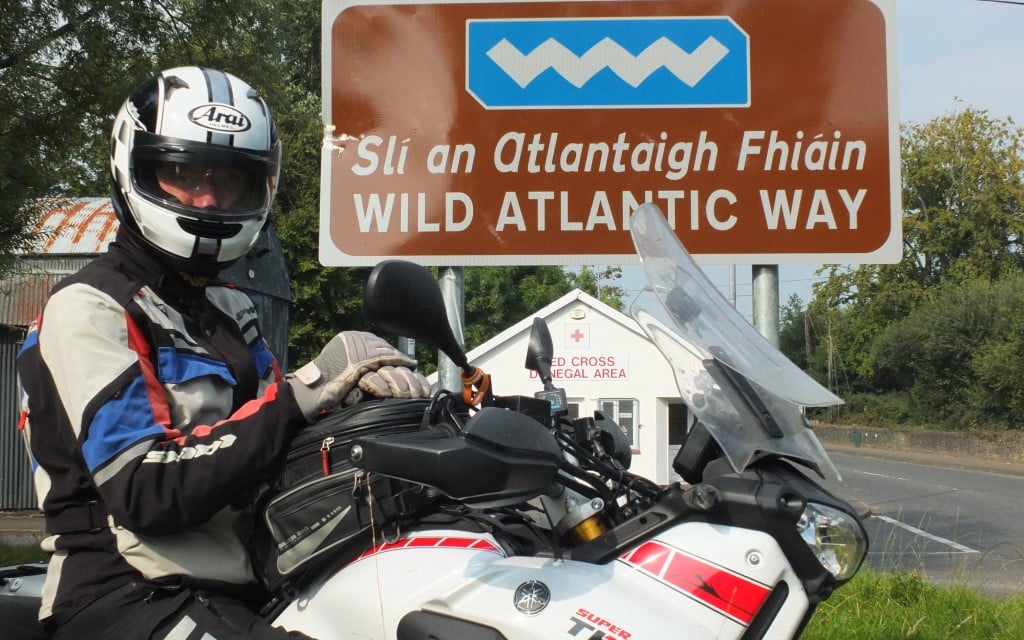
That night was spent at the Sheep’s Head Inn in Durrus, where the owner recommended a detour over Tim Healy Pass on the R574. After heading through Bantry we got a glimpse of the massive Whiddy Island Oil Terminal whose storage tanks hold up to 7.5 million tonnes of oil. Since 1986 it’s been used to store a third of Ireland’s strategic oil reserves and due to significant investment, it has become widely regarded as one of Europe’s best fuel storage facilities. Naturally, in August 2014 it was sold off to an American company.
Following the advice we received in the Sheep’s Head Inn, we followed the route onwards to Adrigol and the Healy Pass. Yahoo! The Healy Pass is like the Applecross Pass in Scotland, only smoother. At a photo stop we were approached by a local farmer who was very friendly and took quite a shine to Penny. He would move in and she would step back. Eventually, she got her helmet on to further protect her lips. Not deterred, he found another prospect further down the road.
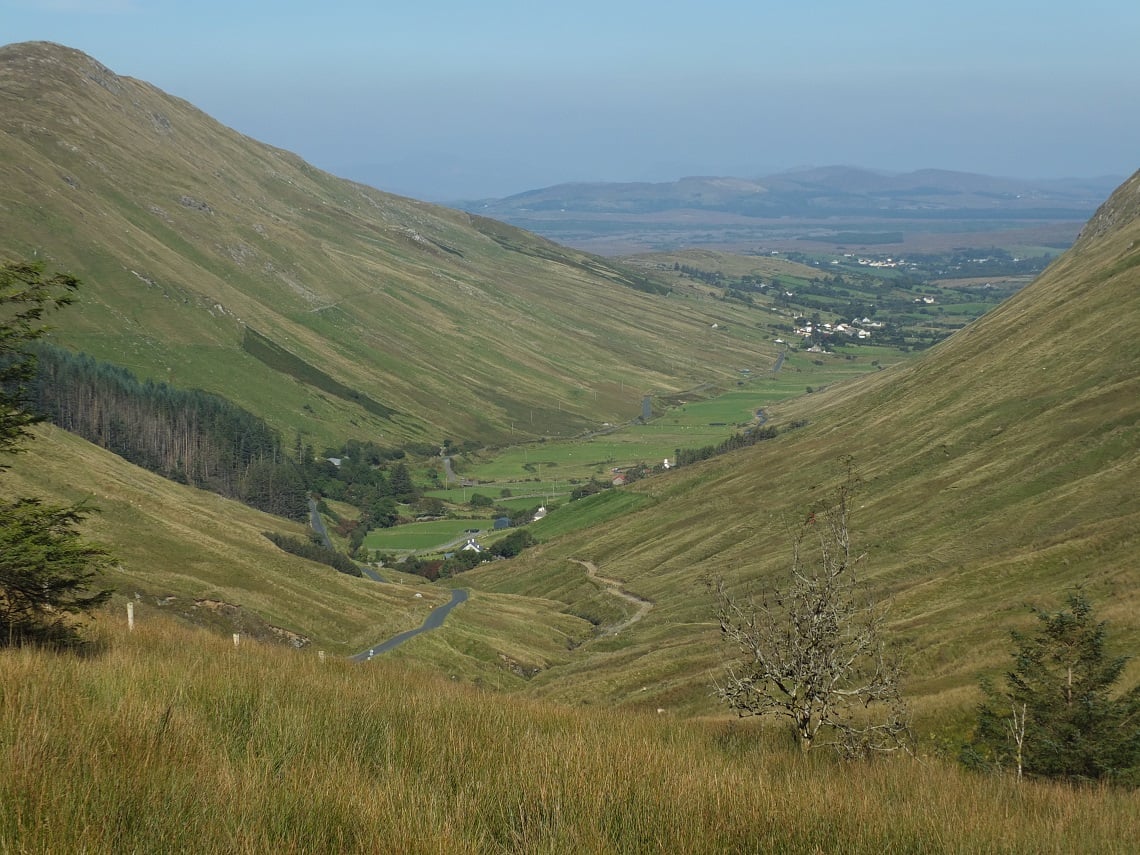
From there, we went through Kenmare and spent the night at Sneem. Here, thanks to an outdoor art exhibition (I know!) we got our first introduction to the Celtic Tiger and Ghost Estates neither of which we had any idea about. It kind of put a different focus on things.
The next day it was on to The Skelligs near Portmagee. About 35 miles of superb sweepers and tight twists. Many people choose to view these impressive islands from a boat, however, an entrepreneurial farmer has cut a track through his land and set up a business allowing viewing from his property. At €4 each we weren’t complaining, the sights were certainly worth it.
Don’t miss: The Tim Healy Pass
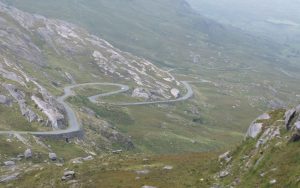 If there’s one road you should ride in Ireland it’s the Healy Pass on the R574 between Adrigole in County Cork and Lauragh in County Kerry. The 11km road reaches a height of 334m and features over 30 significant twists and turns to get the adrenaline pumping. If you come over the top from the Cork side the views down into County Kerry will stay with you for a lifetime as an endless scene of lakes and mountains stretches out in front of you.
If there’s one road you should ride in Ireland it’s the Healy Pass on the R574 between Adrigole in County Cork and Lauragh in County Kerry. The 11km road reaches a height of 334m and features over 30 significant twists and turns to get the adrenaline pumping. If you come over the top from the Cork side the views down into County Kerry will stay with you for a lifetime as an endless scene of lakes and mountains stretches out in front of you.
Onwards to Portmagee, Tralee, then a ferry crossing on the River Shannon, missing out Limerick, we spent the night in Kilkee. Apparently, a beach resort favoured by English royalty in days gone by. While the royalty may have loved the place, we had our worst night here. The whole town were in the pub next door.
The place closed down and went quiet at about 6 am, but not to worry, the party carried on upstairs in the B&B (dissatisfaction, desertion, pleading, seduction, negotiation, snoring, sulking, ablution and door slamming kept us awake, if not amused, all night).
At 7 am we left, slamming the doors as we went. Crap sleep followed by an excellent breakfast at Joe’s Café in the surfing centre of Lahinch. Things always feel better with a full stomach.
Next stop was the Cliffs of Moher. They are spectacular, but the health and safety people have had a field day here. The safety fencing made up of granite slabs are too high for shorter folk to see over, and there were so many warning signs that they detracted from the majesty of what was on the other side. And then in the middle of the vista is an uncomfortable sign for the down at heart. I was surprised they could offer the support and not supply the telephone though!
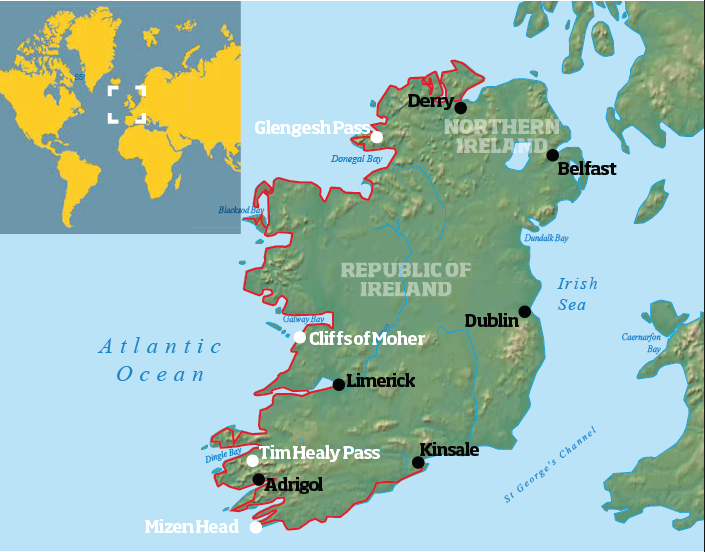
The attraction brings in one million visitors a year. I don’t believe it’s that disappointing, I must have been grumpy from lack of sleep. Cheap entry, and segregated parking for bikes, close to the road and the entry point lightened the mood a little.
Perhaps one of the scenic highlights of the trip came next. The Burran. At last something, you can touch and interact with, and no barriers or signs! Thousands of acres of limestone fields, the effect of which is jaw-dropping. And you are in the middle of it, while the road winds its way for miles through the fields as they seem to drip into the Atlantic Ocean. If you believe in a higher being, he’s been busy around here!
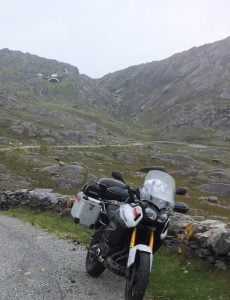
On the same day, we came into contact with a large group of motorcyclists, of all shapes and sizes riding an eclectic array of bikes. These guys and girls were volunteering their time to escort the Viviscal C.R.O.S.S. Rugby Legends charity bicycle ride.
I didn’t get much of a chance to speak with them, but they were out there doing something for someone else and keeping people safe. Good job, we wished we could have got involved.
We skirted Galway and spent the night at Connemara. The hotel with the coaches outside was €135 for room only, and the nice lady in the B&B next door (1/4 mile down the road) was €50 room only! And she was closer to the pub! The run north from here was quite hard work. The roads were often very tight and lumpy. Although enjoyable, we were getting a bit sick of chucking over 400kgs of bike and people around.
We took a shortcut on the N roads from Westport to Ballina then on to Sligo and Donegal. Then it was back on the Wild Atlantic Way, out through Killybegs and up and over the Glengesh Pass (R230). Yahoo again! Talk about steep on the way up, and down the other side twist, swoop, zoom. Awesome, in fact, so awesome we just had to do it twice.
Despite the stunning beauty of the Donegal countryside and the green and gold bunting and good luck messages for the All Ireland Final everywhere, we were stuffed and headed for Letterkenny and Gallaghers Hotel where they have secure underground parking, a sound food and bar menu, and sharp pricing.
The Bike
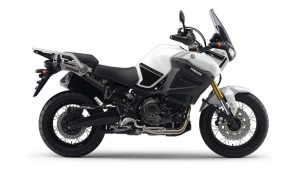 We ride a 2013 Yamaha XT1200Z Super Ténéré and we regard it as a brilliant all-rounder, we don’t want an off-roader and it carries all our gear, and us, in comfort. It’s accurate and responsive, and when you take the stick to it (especially in sport mode) it’s an absolute hoot.
We ride a 2013 Yamaha XT1200Z Super Ténéré and we regard it as a brilliant all-rounder, we don’t want an off-roader and it carries all our gear, and us, in comfort. It’s accurate and responsive, and when you take the stick to it (especially in sport mode) it’s an absolute hoot.
—
We bought it used from Mark at Laguna Motor Cycles in Maidstone with 32 miles on the clock.
—
We’ve added a few aftermarket bits like bash plate, led indicators, Givi AirFlow screen and Oxford heated grips. 2 x 45-litre Touratech ZegaPro2 cases and a 55 litre Givi top box. SheNav (Penny) is short and can’t see into the TT Top boxes.
Rested, the next day was to be our last for this journey. We headed north towards Malin Head. More bays, twisty roads and steep blind corners, and the Atlantic lapping quietly against the shore. For B road twists and climbs, you really can’t get better than this. We have seen Ireland from Scotland and hoped to reverse the view from Malin Head, but the sea fog (or heat haze) meant that wasn’t to be. We wound down the east side of the peninsula passing the finish line just north of Derry.
The ride is great. There is plenty of variety in surfaces, with most being very good. Tight, twisty roads that aren’t that good for high speed were very common, and some of the surfaces deteriorated to the extent that speeds of 30mph were plenty.
Having said that, the passes and a couple of stretches of new hot mix got a second ride, especially when there was no one around. No other traffic to speak of was common off the main tourist bus routes. Always the scenery was stunning, and often you were in it.
We averaged about 200 miles a day, including sightseeing deviations, and that was enough. We completed this ride in eight consecutive days and most days we were on the road by 9.30 am and parked up by 6pm. I’m really pleased to have done the trip on an adventure bike, because my old bones wouldn’t have coped on a sports bike!
We jokingly say that we were ripped off on this trip. We were looking for the “Wild” Atlantic, and were prepared for the rough Irish weather roaring in off the ocean. As we sailed away from Ireland, having been here 18 days and ridden almost all of the island’s coast, we have had nothing but windless warm days. The locals tell us it’s always like this here!
Want to ride the Wild Atlantic Way? Here’s how you can…
How long to book off work
To have a good ride and not rush yourself you’ll want to take at least a week off work. Leave Friday night, get the ferry on Saturday morning and then get home, exhausted but with a smile on your face nine days later. Two weeks would be best though because you can then extend the ride to take in the Coastal Causeway in Northern Ireland on the way home.
When should I go?
We travelled in September, the weather was settled, kids back at school and the tourist season was beginning to die down so the roads weren’t as busy with tour coaches. We quite like travelling in Autumn, things are cool and you can see plenty without having to worry too much about overcrowded roads. Ireland is accessible all year round though.
How do I get there?
Ferries run from England (Liverpool), Scotland (Cairnryan and Troon) and Wales (Holyhead, Pembroke and Fishguard) to Larne (Belfast), Dublin and Rosslare (seasonal).
See www.ferriesdirect.com for more information about these routes. Multiple ferry companies use the routes but expect to pay around about £100 depending on who you use and where you depart from.
Accommodation?
It was relatively easy to find accommodation in the shoulder season. We didn’t see too many campsites and there are also plenty of B&Bs around although our preference was to stay in small country pubs. The cheapest we saw was €24 (£19) per person per night and the most expensive was over €200 (£156) per person per night. Accommodation averaged out at about €30-€35 (£23 – £27) per person per night without breakfast.
Everywhere we stayed had off-street parking and were happy to let us leave the bikes ‘tucked out of sight’. Main centres, particularly noted tourist towns are more expensive, e.g. Killarney, Waterford, Cork, Limerick and so on.
Are you covered?
If you have EU cover on your motorcycle insurance policy (and you’ve notified your insurance provider and received confirmation) you will be covered, the Wild Atlantic Way is all on-road as well so there’s no ‘grey areas’ of cover. We have separate travel insurance for medical and illness.
Difficulty?
It’s not too difficult to ride the Wild Atlantic Way but a lot of the roads are narrow and some are very lumpy or rough so you can’t rush over them or daydream. If you go in the tourist season, be on the lookout for coaches.
Petrol
Unleaded Petrol costs between €1.50 and €1.60 a litre or £1.20 to £1.29.
Misc
The Tour Coaches seem to run in an anticlockwise direction around the Ring of Kerry, and there were a lot of them. Lines of traffic following them supported our view that travelling clockwise maximised the view, with the ocean always on our left, and minimised delays.
Route Information for the Wild
Atlantic Way:
www.ireland.com/en-gb/wild-atlantic-way
www.lonelyplanet.com/europe/travel…/driving-irelands-wild-atlantic-way.

